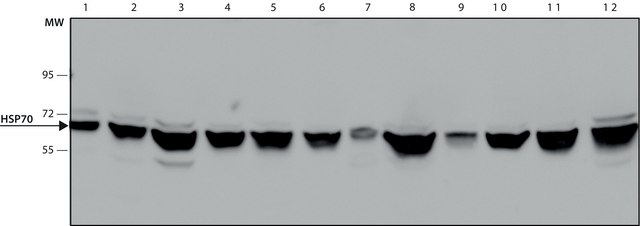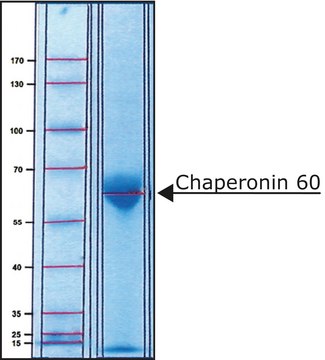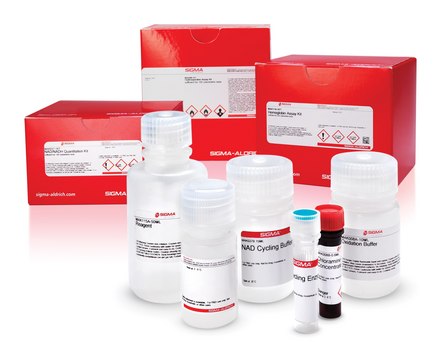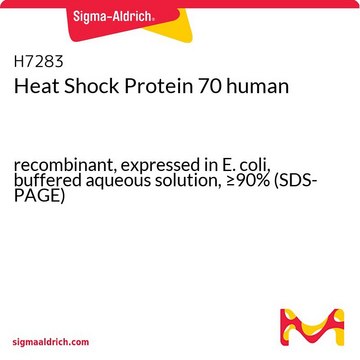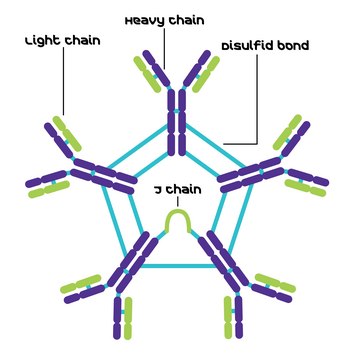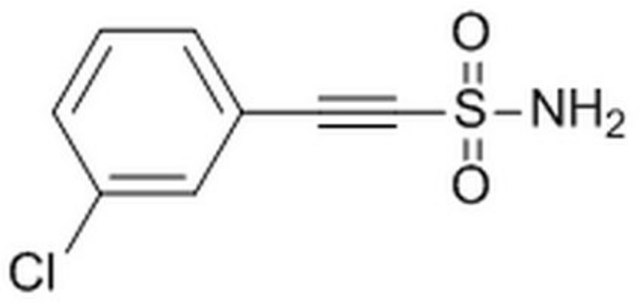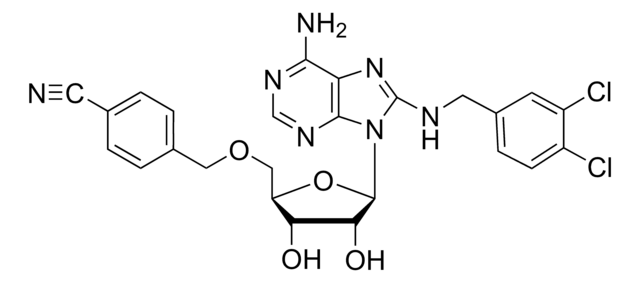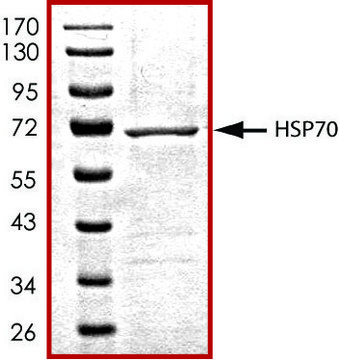H7158
Heat Shock Protein 60 human
recombinant, expressed in E. coli, buffered aqueous solution, ≥95% (SDS-GE)
Synonym(s):
HSP 60
Sign Into View Organizational & Contract Pricing
All Photos(1)
About This Item
UNSPSC Code:
12352202
Recommended Products
biological source
human
recombinant
expressed in E. coli
Assay
≥95% (SDS-GE)
form
buffered aqueous solution
UniProt accession no.
shipped in
dry ice
storage temp.
−70°C
Gene Information
human ... HSPD1(3329)
General description
The gene HSP60 (heat shock protein 60) is mapped to human chromosome 2q33.1. It is a mitochondrial protein. HSP60 is induced under various stress conditions, including DNA damage, oxidative stress and heat shock. HSP60 is also referred to as HSPD1 (heat shock protein family D member 1).
Biochem/physiol Actions
HSP60 (heat shock protein) works together with the cochaperonin HSP10 to allow protein folding of mitochondrial-imported proteins. It is involved in brain myelination and pathogenesis of hypomyelinating neurodegenerative disease. It also enhances proinflammatory response in cells, including macrophages, dendritic cells and endothelial cells. Mutation in HSP60 is linked with hereditary spastic paraplegia (SPG13).
Physical form
Solution in Dulbecco′s buffered saline
Storage Class Code
12 - Non Combustible Liquids
WGK
WGK 3
Flash Point(F)
Not applicable
Flash Point(C)
Not applicable
Regulatory Information
新产品
Choose from one of the most recent versions:
Already Own This Product?
Find documentation for the products that you have recently purchased in the Document Library.
Piotr Bodzek et al.
Journal of ovarian research, 7, 30-30 (2014-03-13)
The aim of this study was to evaluate the concentrations of IgG antibodies against Hsp60 and Hsp65 in sera of patients with ovarian cancer at various stages of clinical progress and for different histopathological types of disease. Serum samples from
Davide Seveso et al.
Diseases of aquatic organisms, 115(1), 15-23 (2015-06-30)
Brown band disease (BrB), a virulent coral disease characterized by a dense concentration of ciliates ingesting coral tissue, is responsible for ongoing coral losses on Indo-Pacific reefs. Although several efforts have been made to identify the microbial communities associated with
Daniella Magen et al.
American journal of human genetics, 83(1), 30-42 (2008-06-24)
Hypomyelinating leukodystrophies (HMLs) are disorders involving aberrant myelin formation. The prototype of primary HMLs is the X-linked Pelizaeus-Merzbacher disease (PMD) caused by mutations in PLP1. Recently, homozygous mutations in GJA12 encoding connexin 47 were found in patients with autosomal-recessive Pelizaeus-Merzbacher-like
Antonella Marino Gammazza et al.
Scientific reports, 5, 9434-9434 (2015-03-25)
The mitochondrial chaperonin Hsp60 is a ubiquitous molecule with multiple roles, constitutively expressed and inducible by oxidative stress. In the brain, Hsp60 is widely distributed and has been implicated in neurological disorders, including epilepsy. A role for mitochondria and oxidative
Jens Jacob Hansen et al.
American journal of human genetics, 70(5), 1328-1332 (2002-03-19)
SPG13, an autosomal dominant form of pure hereditary spastic paraplegia, was recently mapped to chromosome 2q24-34 in a French family. Here we present genetic data indicating that SPG13 is associated with a mutation, in the gene encoding the human mitochondrial
Our team of scientists has experience in all areas of research including Life Science, Material Science, Chemical Synthesis, Chromatography, Analytical and many others.
Contact Technical Service